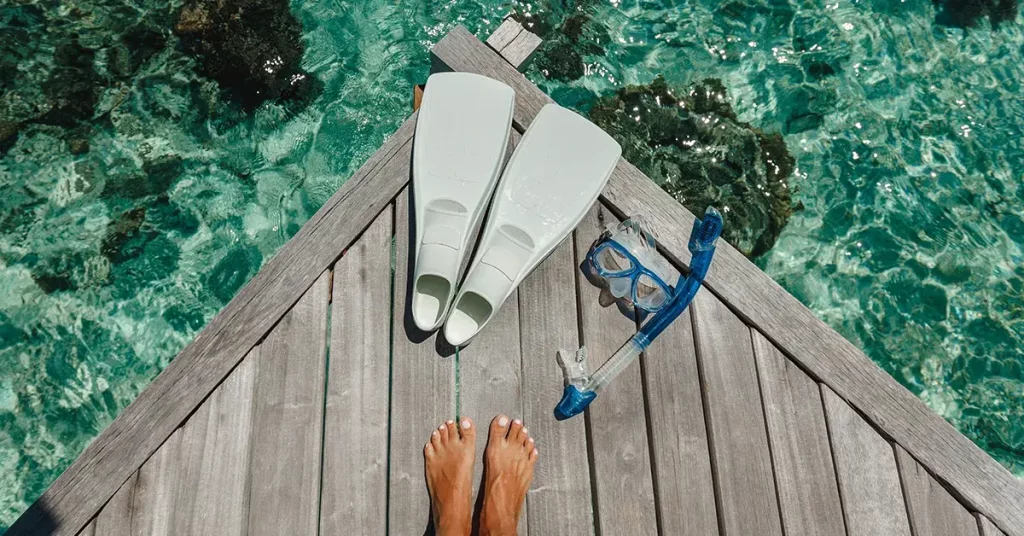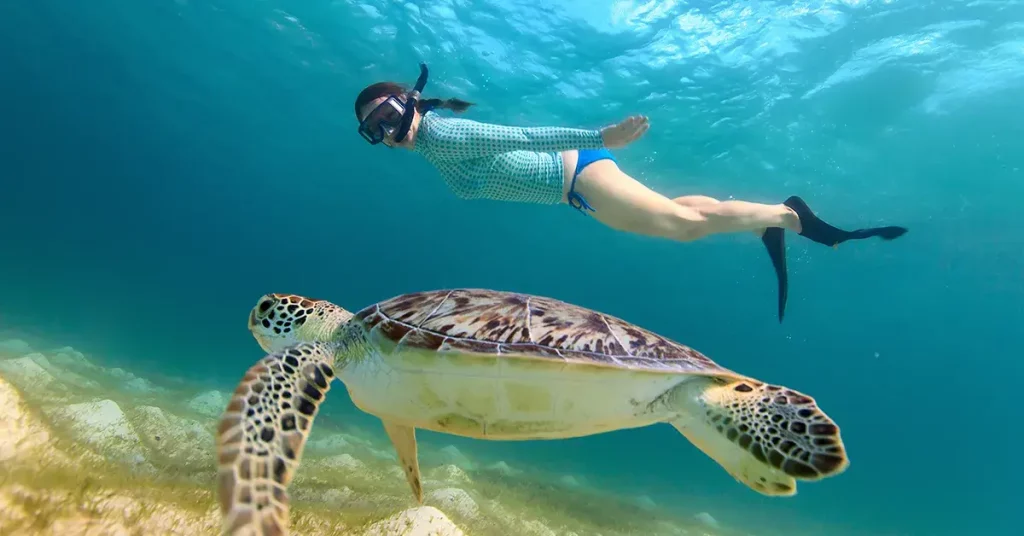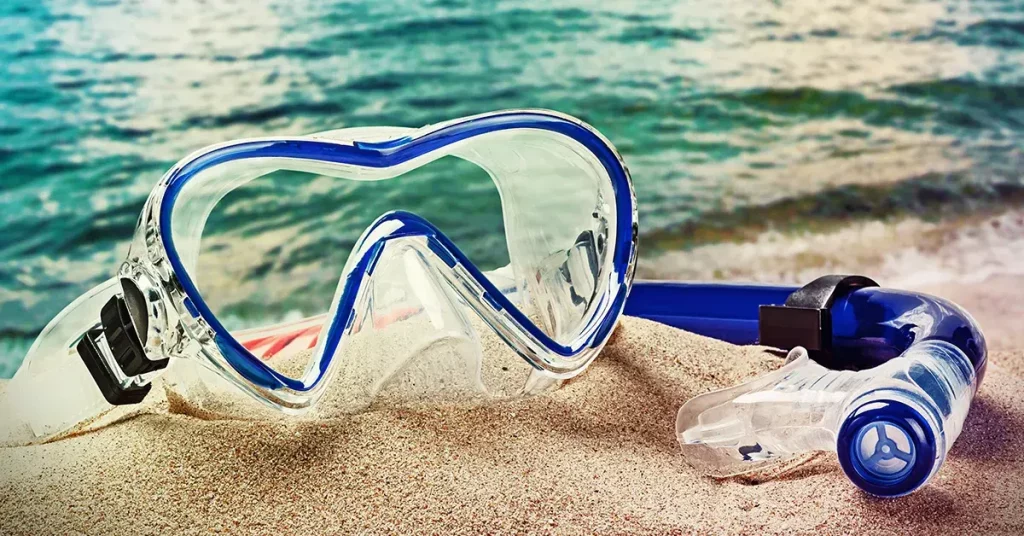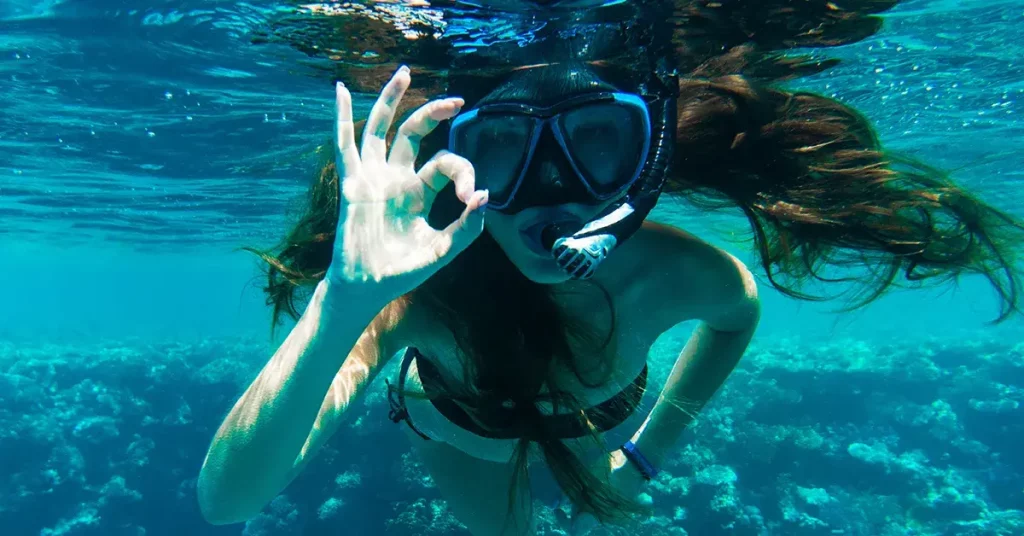Snorkeling is one of the world’s most popular water sports, but what do you need for snorkeling? This is the question we’re about to dive deep into.
First, we will cover the basics so you have a solid foundation of how to snorkel. Then we will break down all of the snorkeling gear you need to have fun snorkeling, followed by some special snorkeling tips.
The Basics of Snorkeling
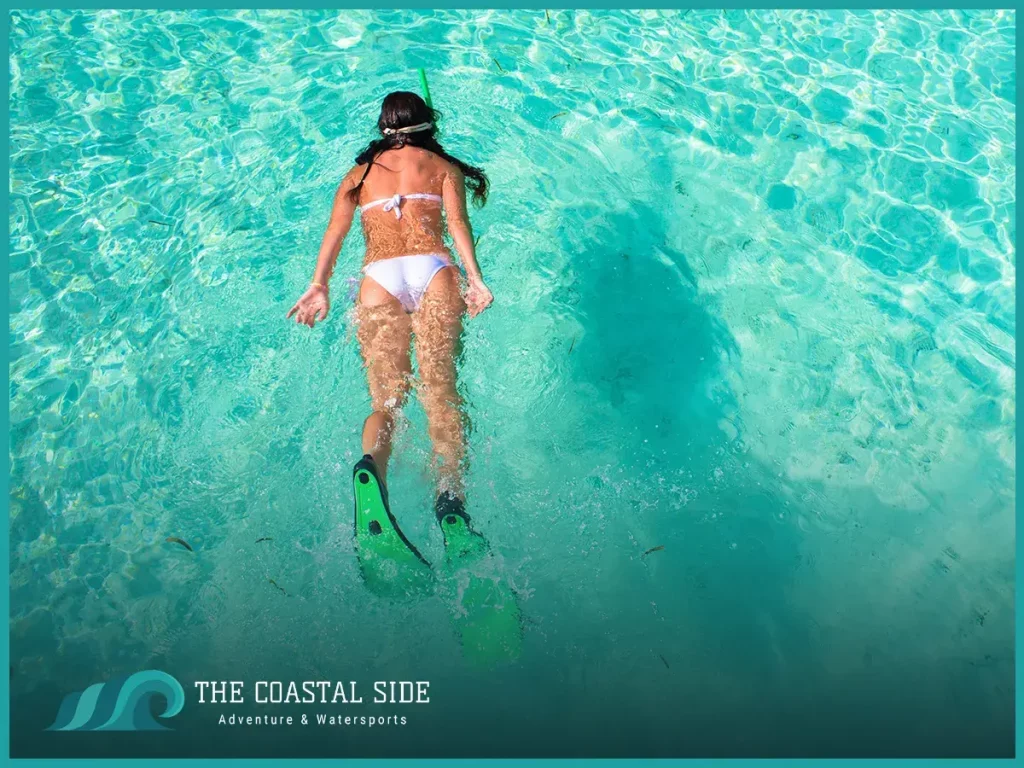
This is one of the easiest water sports to begin and enjoy immediately. It doesn’t require a lot of complicated equipment like scuba diving. You also don’t have to be the most confident swimmer to have fun, and you get to witness the magic of the underwater world.
Knowing How To Snorkel
There are 5 things you should know about how to snorkel. These are easy to remember and will help make sure you have a great snorkeling experience every time. They’ll also make you and your friends not look like newbie snorkelers.
- Swimming and snorkeling go hand in hand, or maybe we should say fin in fin. Either way, you won’t necessarily need a swim cap, but you will need to be able to swim.
- You will be using the snorkel to breathe underwater and your snorkeling mask lets you view marine life. The entire experience is easy and fun for all ages.
- You don’t always have to swim. Floating is one of the easiest ways to start snorkeling.
- You can go even if you can’t swim. You won’t want to go out into the open sea, but you can stay in shallow, calm water, at a depth where you can easily stand.
- If you do swim, snorkeling fins aren’t required but they do make swimming much easier, especially if you’re in the open sea.
The Snorkel Gear You Need
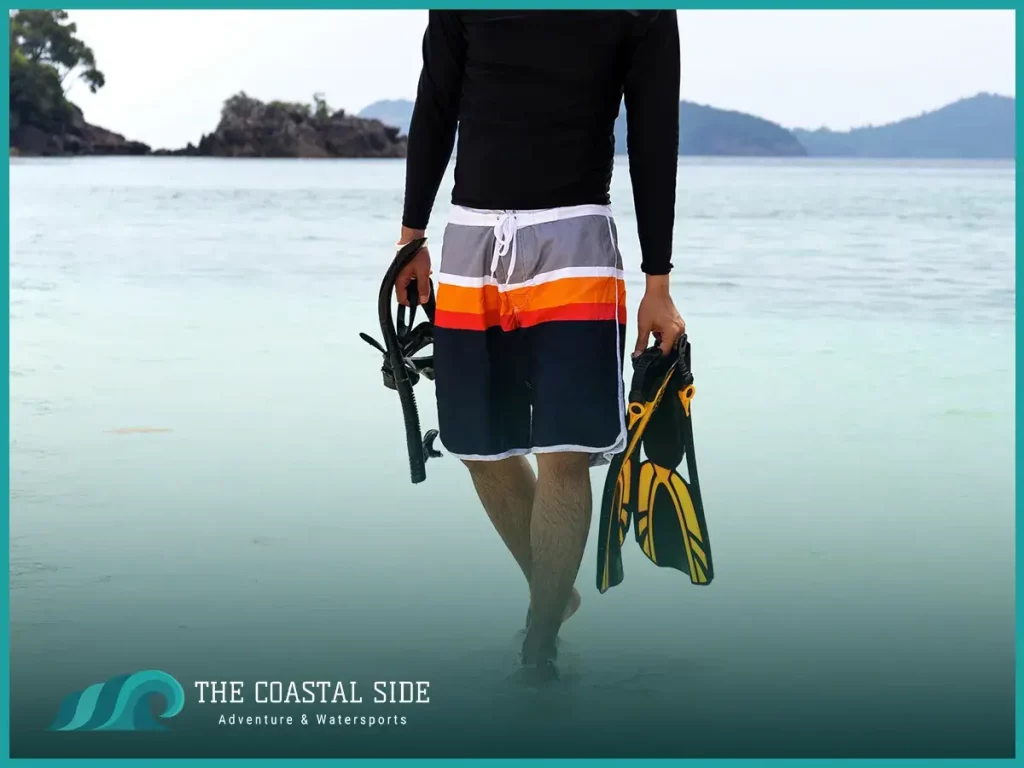
Now that you know the basics, let’s start talking about all the snorkel gear you need. Scuba divers need a lot of complicated equipment, but not snorkelers. Snorkeling gear is pretty simple and straightforward. Let’s look at the basic snorkel equipment you need to get started, and then go over some snorkeling gear for advanced snorkelers.
Basic Snorkel Gear Checklist:
- Snorkel mask
- Wet snorkel
- Snorkeling fins
- Sun protection in the form of clothing or sunscreen
Advanced Snorkeling Gear
- Dry snorkel
- Snorkel vest
- Rash guard
- Wet suit
Finding The Best Snorkeling Mask
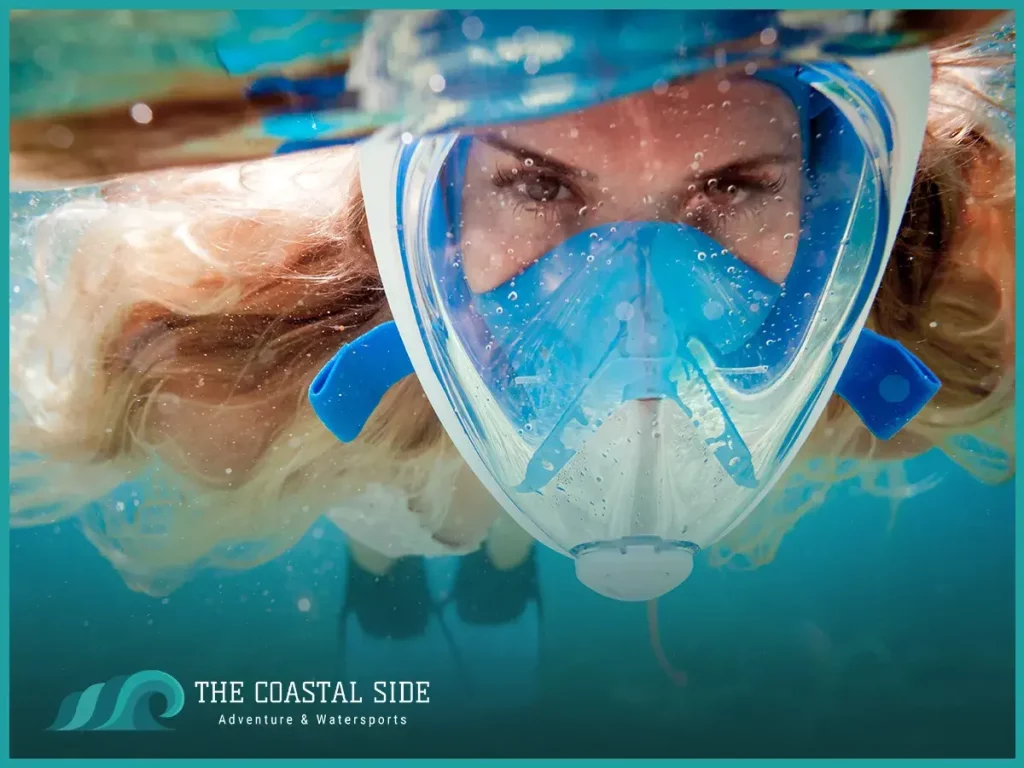
Finding the right gear starts with picking out the best snorkeling mask that’s fit for you. You want one that you feel has a comfortable mouth shape. Snorkeling masks should fit perfectly around your face, without causing discomfort, and without any leaking. A leaky mask can ruin a snorkel trip. A snorkel mask is similar to a diving mask, and diving masks can be used for snorkeling. Let’s look at each piece that makes up a snorkeling mask and go over ways to find your best snorkel mask.
Mask Straps: The mask strap that goes around your head and keeps your mask in place should be flexible and feel soft on your face. They are often made of silicone, rubber, or neoprene. There are buckles at the sides of the strap to adjust the tightness and keep your mask properly secured. Straps come as a single wide band or a split band. Choose whichever kind of strap feels most comfortable to you.
Skirts: The part that touches the sides of your face and seals out water is called the skirt. It should feel comfortable against your skin. Feathered skirts are known for being more comfortable and having better seals.
Lenses: There are many different types of lenses. Some are single, some are double, and some have extra lenses on the side of the mask to give you peripheral vision underwater. All lenses are made of tempered glass. They are scratch-resistant and are treated with an anti-reflective coating that improves underwater vision. Single lenses have wider views without the divider in the middle. Double lenses are recommended for snorkelers if you wear glasses. They allow you to insert different strength prescription lenses in each side to see properly underwater.
Nose Pockets: A nose pocket is the part of the mask where your nose rests. Nicer nose pockets come with a purge valve. If water leaks into your mask, purge valves help drain the water and keep underwater visibility clear.
Mask Volume: The volume of a mask is the measurement of air space between your eyes and the lends. Low-volume masks have less space and the lenses are closer to your eyes. High-volume masks have more space and the lenses are further away from your eyes. Try different volumes to see which one feels like the best fit for you.
Full Face Snorkel Masks: Full face snorkeling masks are exactly what they sound like. They cover your entire face and the snorkel is built directly into the mask. They’re also called dry masks because they keep your face from getting wet. Some people prefer them because you don’t have to bite down on a mouthpiece.
Choosing The Best Snorkel
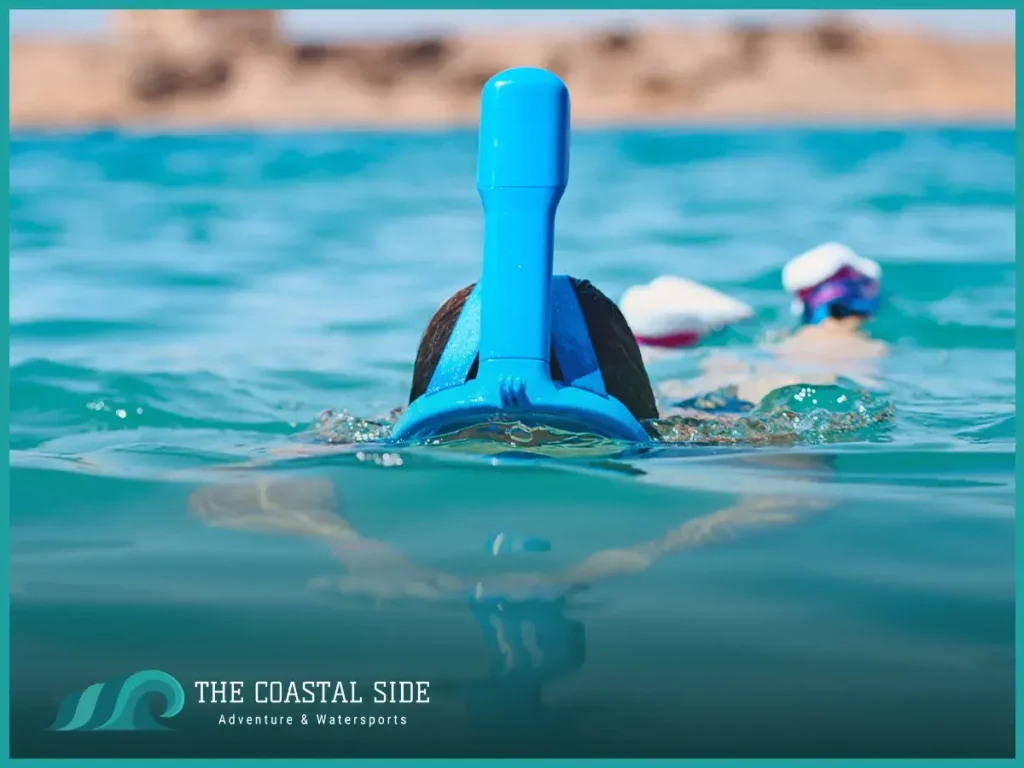
Nothing makes a snorkeling excursion more enjoyable than having a good snorkel. Snorkels are the special-shaped breathing tube that allows you to breathe underwater. There are three kinds of snorkels.
Classic/Wet Snorkel: These are your classic and most basic snorkels. They have an open top and water can get into the breathing tube.
Semi-Dry Snorkels: Semi-Dry Snorkels usually have a splash guard at the top of the tube that prevents water intake.
Dry Snorkel: Dry snorkels have a dry valve splash guard that prevent water from coming into the tube even when submerged underwater. These are great for free dives and other diving.
Getting the Best Fins
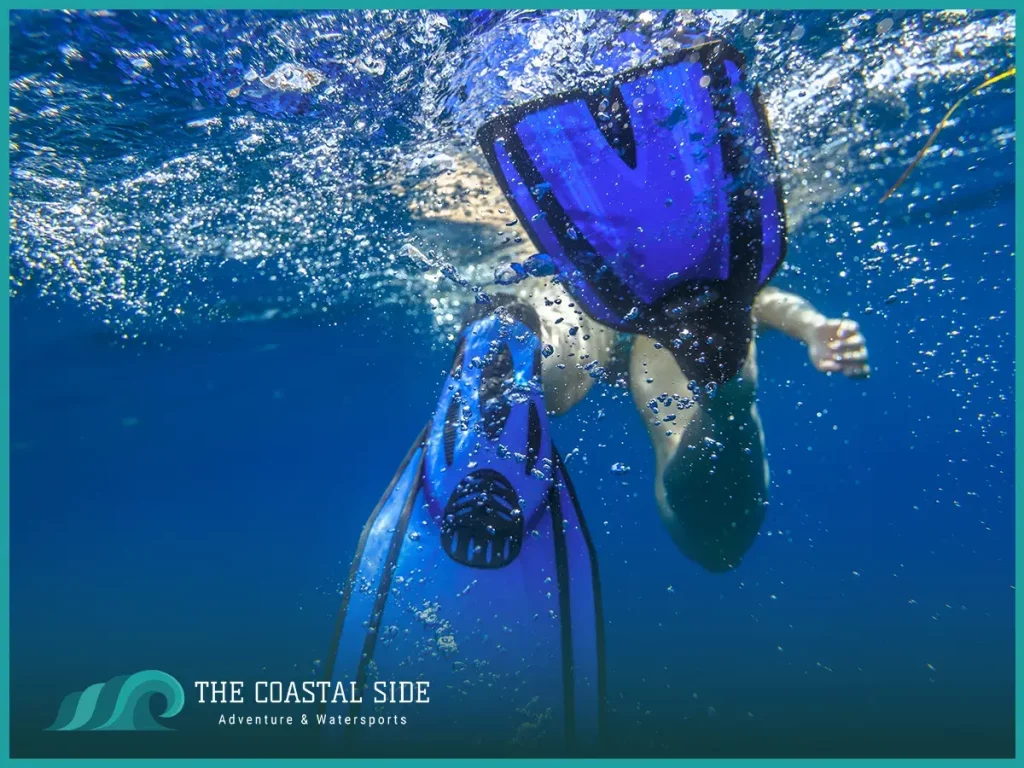
Snorkeling fins and scuba diving fins are the same. Just like other snorkeling equipment, there are different types to choose from. Use your shoe size as a good indicator for what fin size you need.
Full Foot Fins: These fins work like a water shoe. They have an opening that you slip your foot on. You don’t need socks, but you can wear dive socks to make them more comfortable.
Adjustable Fins: Adjustable fins are also known as open heel fins. They have a heel strap that you can adjust to fit tighten the fins to your feet. Dive boots are needed with adjustable fins to keep your feet protected.
Split fins: The split fins are split down the middle. They have less resistance when kicking than other fins so they’re good for people who have problems with their knees.
Should I Buy or Rent Snorkeling Equipment?
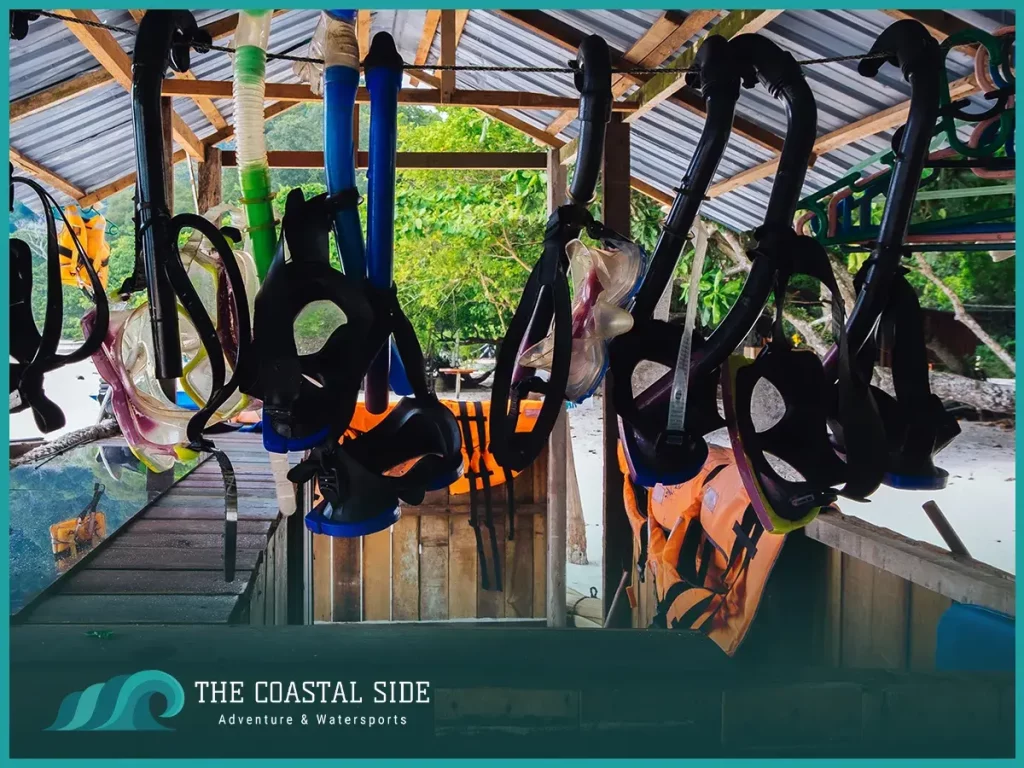
You can rent snorkel equipment or buy your own equipment. There are pros and cons to both.
Pros of Renting
- Don’t have to worry about traveling with gear
- Any dive shop will have everything so you won’t be without something you need
- Can try snorkeling without investing much money
Cons of Renting
- Other people use the same gear
- The equipment doesn’t always fit the best
- Equipment can be old
Pros of Buying
- You don’t need to waste time trying on rental gear
- Basic snorkel sets are often cheaper than renting
- You can go whenever you want
Cons of Buying
- If you buy before trying, you may waste your money if you don’t like it
- Gear nuts can overspend on fancy gadgets like a snorkeling watch
- You will need to make room in your luggage for your gear when traveling
Snorkeling Tips

Here are tips for snorkelers to make sure every snorkeling experience is a great time.
There’s Safety In Numbers: Always go with a buddy and stay near your group if you’re on a snorkeling tour.
Sun Protection: Having proper sun protection will help you have a good time. However, some sunscreen can damage coral reefs and cause coral bleaching. Look for something that says it’s a biodegradable sunscreen or a reef friendly sunscreen. Wet suits and other water clothing can also be worn to protect against the sun, rocks, reefs, and jellyfish stings.
Leave Marine Life Alone: Watching whale sharks and other sea creatures is great, but leaving them alone is the best protection for them and you.
Be Aware of Weather Conditions: Weather presents many potential dangers and can change at a moment’s notice. Take moments away from the underwater world to pay attention to the weather.
Conserve Energy by Floating: Float instead of swimming to save your energy. You will also get to see more if you go slow.
Time to Explore The Water!
Now that you know all the pro tips, the ins and outs of equipment rentals or buying your own, and how to pick out the best snorkel gear for yourself, you’re all set for your next adventure. Besides what we’ve already mentioned, one last piece of advice is to bring a waterproof camera. This way you can capture your underwater moments with outstanding photo quality and have them to look back on for years to come.

